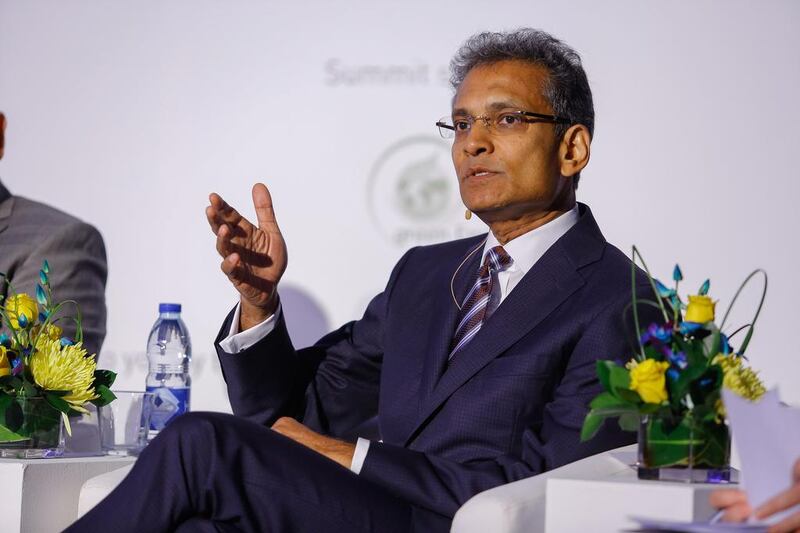Paddy Padmanathan, chief executive of Saudi Arabia-based energy firm ACWA Power, talks about the prospects for renewables in 2018
QWill renewables still hold strong in a stronger oil price environment?
AGenerally, the national oil companies tended to fund their project investments on a conventional balance-sheet basis. They do go to the market and raise financing, in the form of bonds etc. In my view, they tap a different pool of liquidity to get those projects funded. Renewables, hugely attractive to the financial markets in the world today, is the darling of the investment mix and project finance, attracts a different pool of capital so we don't see a competition for capital.
What is your growth outlook for CSP in the region?
I'm fully expecting to see Saudi Arabia in the new energy mix including CSP. CSP deployment will accelerate, from very low volumes albeit but significant amounts will start to creep into the system. Watch this space in 2018.
Do you expect the prices to continue to fall - is it on a case-by-case basis or project specific?
Different technologies are in different stages of the curve. PV in my view is somewhere down in the flatter part of the curve. There are still opportunities to go down. There was a time when PV was one dollar per kilowatt hour (kWh). Today we're talking three cents per kWh. CSP five years ago was 40 cents per kWh and now it's down to 7.3 cents. We see a price path for that to go down, few more projects and it'll come down too. Room to go, so renewable energy has got space.
Are we going to see localisation of renewables-related manufacturing in the region?
We're not going to have 10 countries in the region all having mirror manufacturing facility, glass manufacturing facility. Ultimately what we're going to have is markets like Saudi will attract localisation, but I also see some of the smaller components being localised at smaller volumes. There is an opportunity there but not as big an opportunity as people think. We'll see the development of specific hubs, and also it'll be very sensible for these countries to get a little bit more co-ordinated so they don't allow the private sector to abuse the system.
Is there room for private sector to get involved in the renewables space?
The market is huge. There's going to be a significant revolution, while we continue to deploy utility scale plants, the real revolution is going to be on rooftops, distributed generation and mini-grids at a very remote rural level, mini-grid even right in the middle of urban areas, rooftop panels, small battery. You're still connected to the power line but it's still for emergency supplies. If you structure your regulations right, you can attract a significant amount of small and medium sized enterprises in deploying these things and even in manufacturing sub-components, so there are a lot of opportunities.







